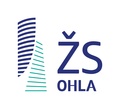History of Brno City Theatre
Already in the period of the “First Republic”, there were tendencies to create the second drama theatre in Brno, however it was only after the War, at the end of May 1945, when a group of young dramatic artists led by Milan Pásek, a twenty-five years old stage director, was successful in obtaining a licence for the operation of the second drama theatre. Such a success was reached thanks to professor Jiří Kroha, who at those times discharged a post of a cultural referent in the National Committee and supported the idea of founding a new theatre. However, the conditions were quite harsh: it was not necessary just to prove economic self-sufficiency, but also artistic viability in a test period of three months (June – September). It was an absurd idea. Nowadays, nobody would go the theatre on hot summer days. But it was the after-war period, the “cultural fast” had been long and so there was nothing to discourage the spectators. The theatre group began to play in the Falkensteiner Street (today’s Gorkého Street) using a name of Free Theatre, and in the test period, five new plays were staged. According to the number of repeat performances, a Czech novelty Manon Lescaut by V. Nezval and Pseudolus by Plautus were then the most successful plays. A group of young enthusiasts seemed to win popularity and till the end of the season (June 1946) it produced 15 new plays. Twenty first-night performances, it was a respectable efficiency. The Free Theatre was a very poor theatre (low wages; there was little money for stage sets, etc.), however, it was rich with energy, creativity and enthusiasm. In four years (until the end of the season 1948 to 1949), the theatre put on 71 new plays and more than one thousand repeat performances. The plays The Mother and The Macropulos Thing by Karel Čapek belonged to the most attractive plays together with detective novel Ten Little Indians by Agatha Christie.
However, at that time new “reforms” were “knocking on the door”. The theatre (as well as others) was forced not only to change the artistic concept but also to change its name – City and District Theatre, Regional District Theatre, which implied that the theatre was obliged to care for the export of theatre culture to Moravian and Bohemian regions. Since 1962, the theatre took a name after the Mrštík brothers. Just a few know that another name was “threatening” the theatre – a name after the minister Zdeněk Nejedlý – and that the clever theatre artists remembered the Mrštík brothers and used them as a protection against the other name in spite of the fact that besides Marisha, they did not put on practically any of their plays. The theatre’s seat was in the Jakubské Square (today’s Bolek Polívka´s Theatre). The theatre kept the name The Mrštík Brothers´ Theatre until 1988, when it was pressed to join the Večerní Brno Theatre and the Radost Marionette Theatre, using a common name The Theatres of Brno. However, after the “Velvet Revolution”, this gigantic conglomerate broke down and the definite name Městské divadlo Brno (the Brno City Theatre) was given to the theatre. The whole of this quite an interesting history was described in details by professor doctor Zdeněk Srna in the publication called The Half a Hundred Years of the Brno City Theatre. Today, professor Srna is perhaps the only one who has seen all the theatre’s performances since its creation until the contemporary days, which means that the above-mentioned publication reflects an insight and well-founded view. Many creators have worked in the theatre; let’s name at least the most important ones, such as professor Rudolf Walter, dr. Libor Pleva; Antonín Kurš; Jan Fišer and Milan Pásek – the director and manager-founder, then a manager since the sixties until the end of eighties, and finally Stanislav Moša, the current manager and chief director, under whose management the theatre has radically changed its artistic course. The alteration of the existing auditorium and stage of the theatre in the Lidická Street and the building of a new auditorium and stage for 700 spectators is mostly the result of Mr. Moša´s efficient activities and effort. Since the very beginning until the present days, the theatre has put up 700 new plays, and in the year of its anniversary in 2015, when the theatre will be 70 years old repeat performances difficult to count.
This is really a very nice result – what more can one ask for?






